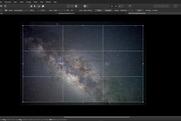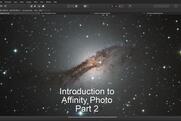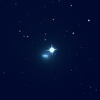Introduction to Affinity Photo
This software is becoming increasingly adopted as a Photoshop alternative. With its new version 1.9 update, Affinity Photo is an even stronger photo editing application. Available for macOS, Windows and iPad, Affinity Photo 1.9 adds many new features including astrophotography stacking.


Introduction to Affinity Photo
Comments
Very nice but it is a shame that the RGB composition procedure in Part 2 is outdated. This is because James Ritson of AP fame has published a set of free macros to make all kinds of compositions, such as HSO, easy to do. I do not find here on TL the corresponding tutorial, except perhaps the premium one by JR which is not for lowly bronze members like me. Anyway I think TL is great!
Hi Irving.
Yes, the JR Macros weren't available at the time of writing that video tutorial. When time permits I'll look into updating the tutorial.
no sound?
Hi Patricia.
I clicked on the video link for this tutorial and the sound seemed fine. Could you try the link on another device and see if it works?
I do not understand the tutorials. I keep explecting extensive text that will tell me all about how to do a lot of things, but when I get there a figure may appear showing an astronomical image and no text telling me very little. Am I missing the boat somehow? All I have learned to do is click to choose some object, but no instructions on how to use Telescope live and do a lot.
Hi Ralph. Firstly, I have to point out that virtually all of the tutorials have been created using spoken words with the tutor explaining verbally and showing the results on the PC screen. We think this offers the best way to understand some of the complex procedures involved with modern image processing techniques.
If you go to the Tutorials section of the Telescope Live website and then go to the 'All' section, you should see there are basically two types of tutorial available. The first type, composed by Adam Block, explain clearly how to use the Telescope Live interface when booking 'advanced' requests. The other type cover a wide range of processing techniques using a variety of simple to complex astronomical programs.
By far the easiest way to get started is to use the 'One Click' observation request. On the 'One Click' page you'll see many targets and explanatory captions showing which telescopes, cameras and filters are used. You simply have to choose your target and click on the link to submit your observation. When the observation has completed you'll receive a notification from which you can download your data.
For more advanced observations the 'Silver' and 'Gold' monthly packages allow you to choose your own target and telescope.
I also recommend visiting the Telescope Live FaceBook page where there is a lively discourse amongst Telescope Live users and other amateur astronomers on a variety of topics.
Hope this helps. Cheers, Nik
no sound on video
Thanks so much!
Thanks Keith. Glad it was of use.
Would it be possible to see subtitles on the video? Regards!
Hi JM. I'm not sure at the moment but will investigate to see if we can include subtitles. Thanks for the suggestion.

